COLONIAL WILLIAMSBURG FAST FACTS
LOCATION: Williamsburg, Virginia
HOURS: 9am-5pm daily
COST: $45 Adults, $25 Kids 6-12
TIME TO COMPLETE: 2-4 hours
ACCOMODATIONS: Large parking lot, public restrooms & Visitor Center
Colonial Williamsburg is a genuine living museum where you are transported back into 18th century life in the New World colonies. It is a combination of reconstructed buildings on their original sites and original structures faithfully restored to their original beauty. Like so many older communities, Williamsburg had its share of tragedies and destruction. In particular, fires destroyed the Governor’s Palace in 1781, the Capitol Building in 1747 and the Raleigh Tavern in 1849.

Much of restoration of Colonial Williamsburg can be traced to the efforts of the Reverend Dr. W.A.R. Goodwin and the generous funding from John D. Rockefeller Jr. in the early 20th-century. Today you can experience many of the town’s private homes, former government buildings and trades like blacksmith, cabinetmakers and silversmith plus restaurants and taverns. Most of the area is accessible for a modest entrance fee but note that there is an additional fee if you want to go inside the many buildings and historic sites or ride in any of the horse & carriages.
Jump to a specific section.
Visitor Center
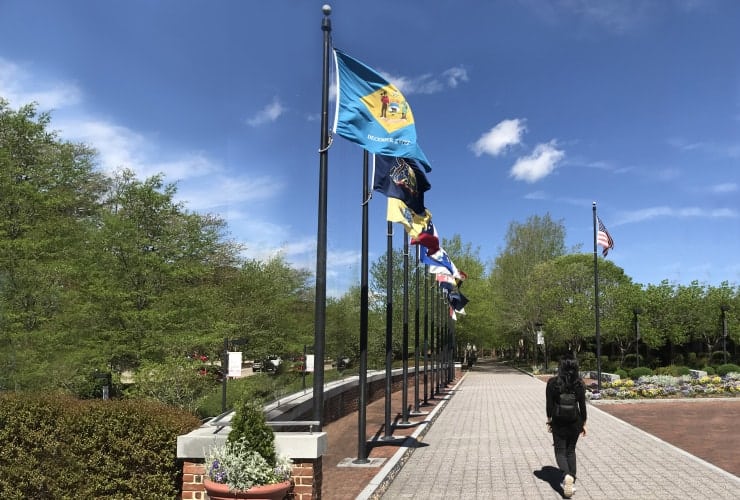
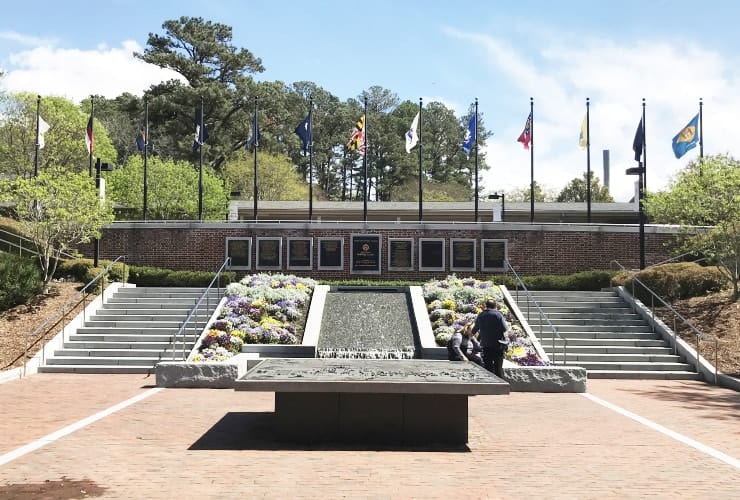
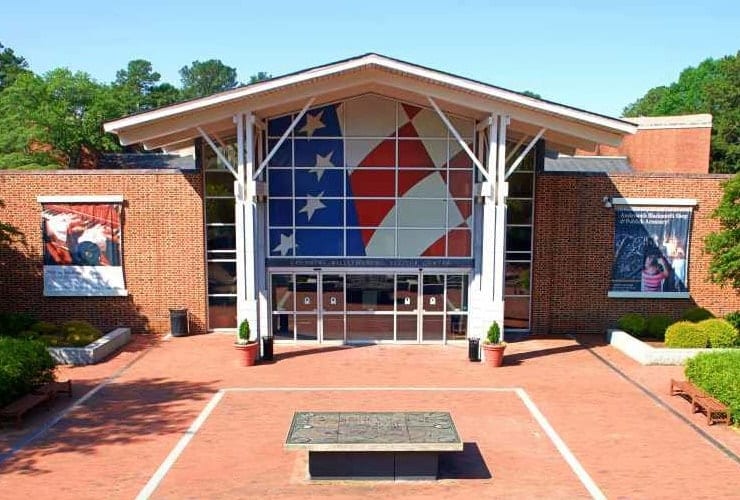
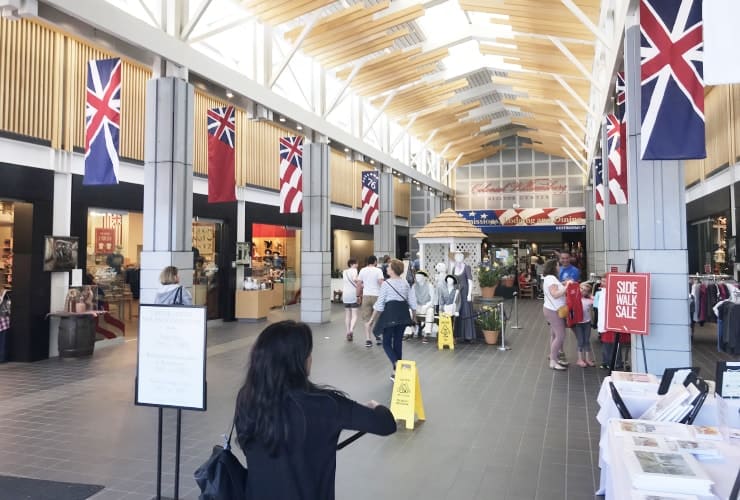
As you enter from the east parking lot you are greeted by flags from the original 13 colonies overlooking a cascade of water framed by fresh flowers. As you descend down the ramp you’ll notice a bronze relief of the entire Colonial Williamsburg complex. Inside the Visitor’s Center you can purchase tickets, make reservations, obtain travel brochures as well as the pick-up spot for the free shuttle buses. You’ll also find two larger stores, one with an extensive collection of books on the period, another containing everything Williamsburg. There’s even a small café where we had lunch. When you exit the building on the southwest end you’ll go over a small bridge and follow a path that will lead you to the village with a few stops along the way . . .
The Windmill
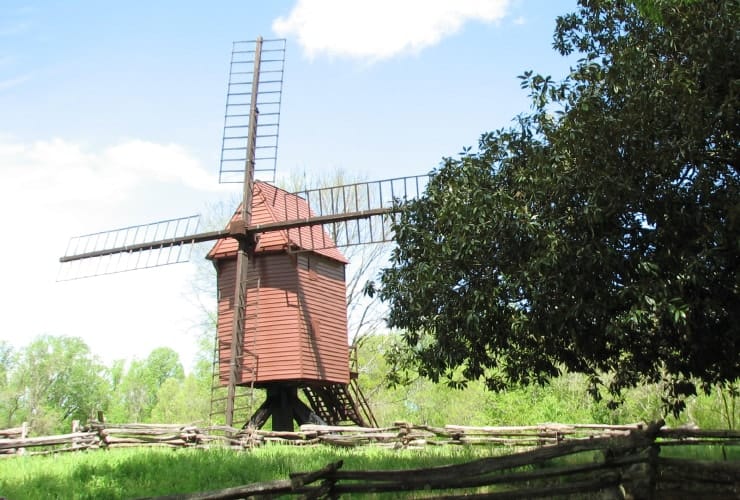
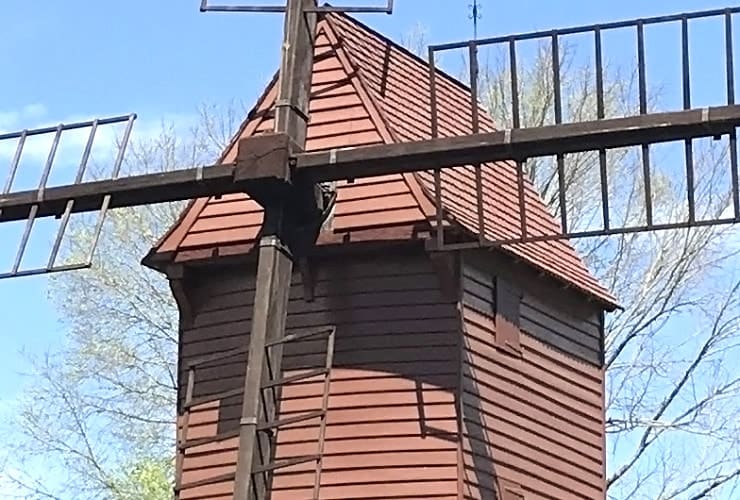
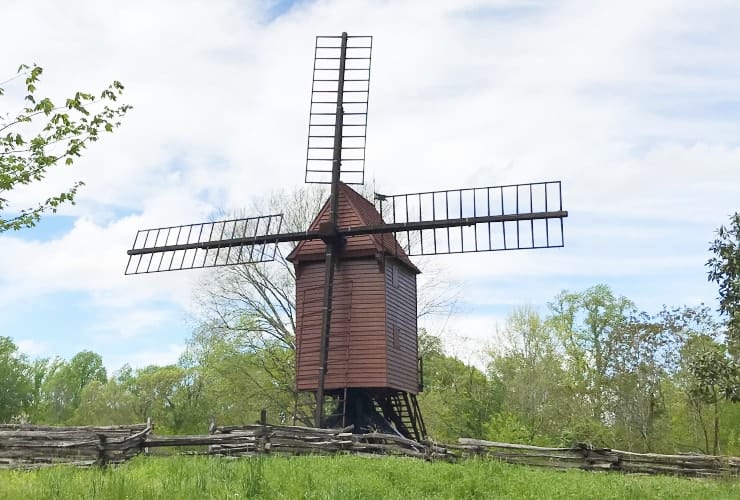
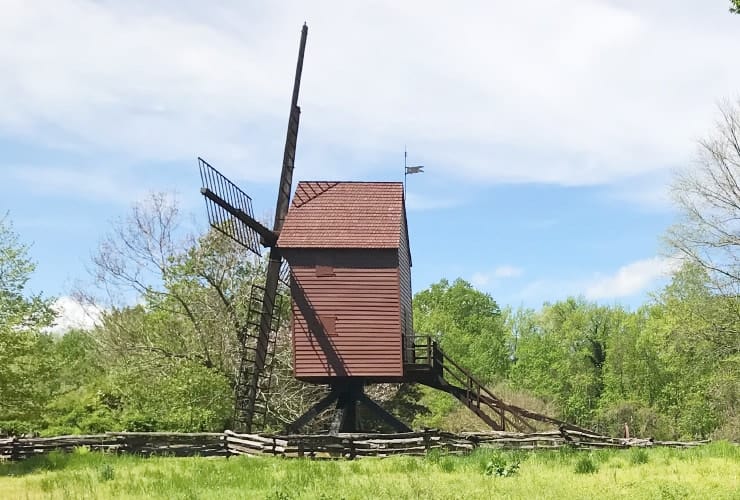
While one doesn’t readily associate windmills with colonial Virginia they were, in fact, quite common. Positioned to always face prevailing winds these windmills required a minimum winds of 15 mph to effectively operate. Consequently they were generally placed on high ground near running water like the coast or rivers and were used to grind corn into cornmeal. This particular windmill was built, as a period replica, in 1957 to commemorate the 350th anniversary of the founding of Jamestown.
Great Hopes Plantation
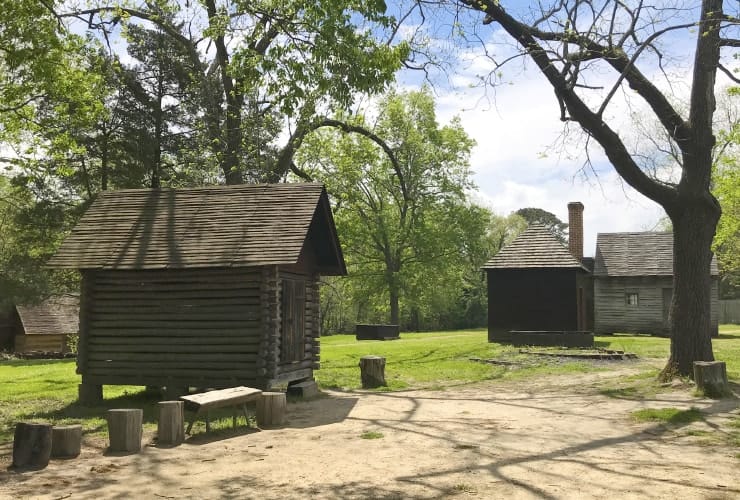
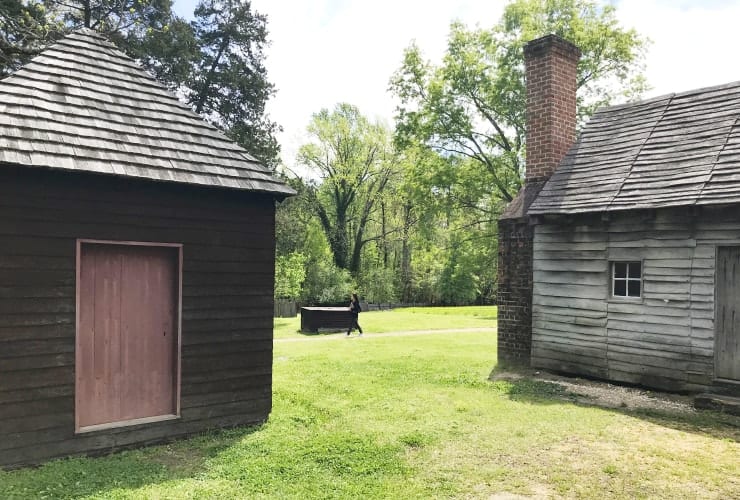
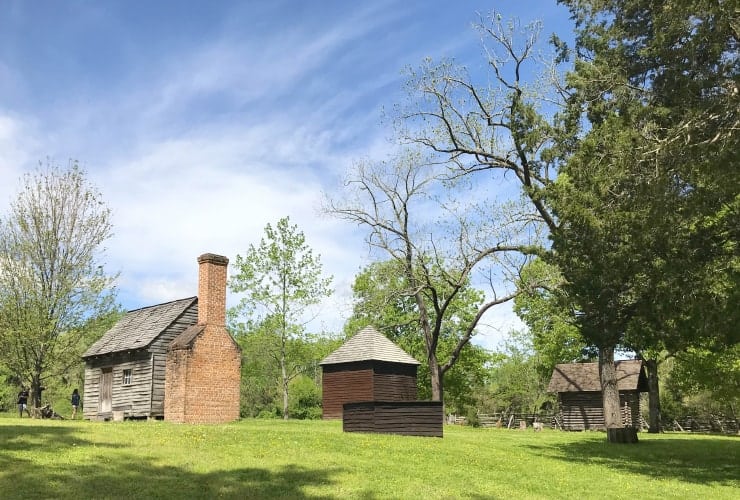
While there were large plantations like Tara as depicted in Gone with the Wind, most were in fact rather small and tended to specialize in a single staple like corn, wheat or tobacco. Usually somewhere between 100-200 acres, these farmsteads were worked by slaves, freed blacks as well as the owners and their family members. The Great Hopes Plantation is a recreation of the main living area on such a plantation including the planter’s house, slave quarters, tobacco house, smokehouse, a centrally located well and a garden. After the plantation you’ll continue on the path, walking under the Colonial Parkway overpass and following the green “HISTORIC AREA” signs, until you reach the Gateway.
The Gateway
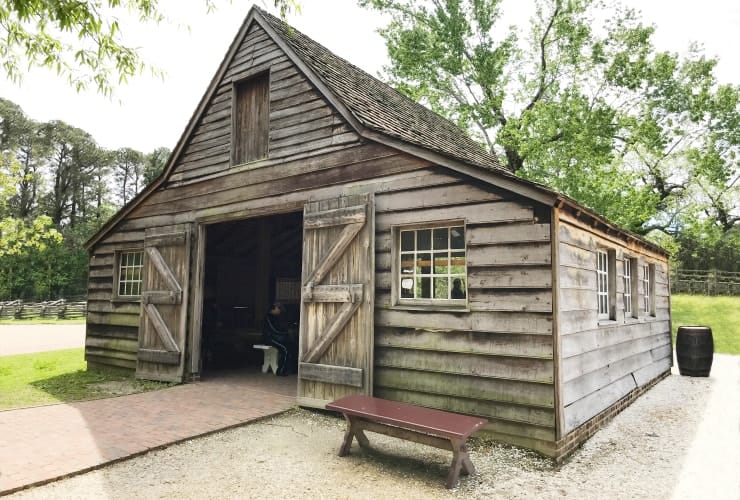
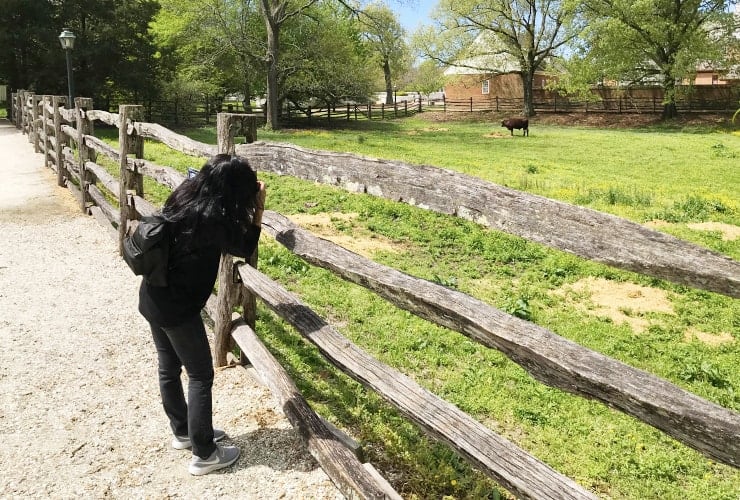
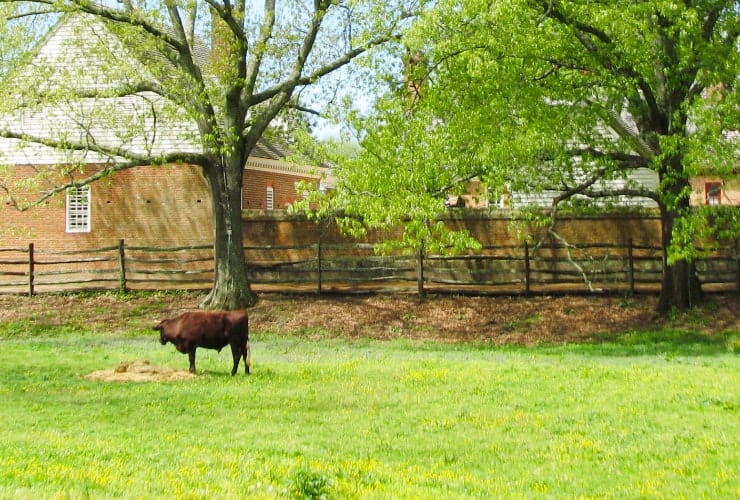
The Gateway is the main entry point to the historic section of Colonial Williamsburg. The building itself is just a nice cool-down spot if you’re visiting in the summer humidity but it does contain some way-finding information and programming. The paddock next to the building usually has some cattle grazing behind authentic 18th century split rail fencing. Head south down North England Street until you come to . . .
Nicholson Street
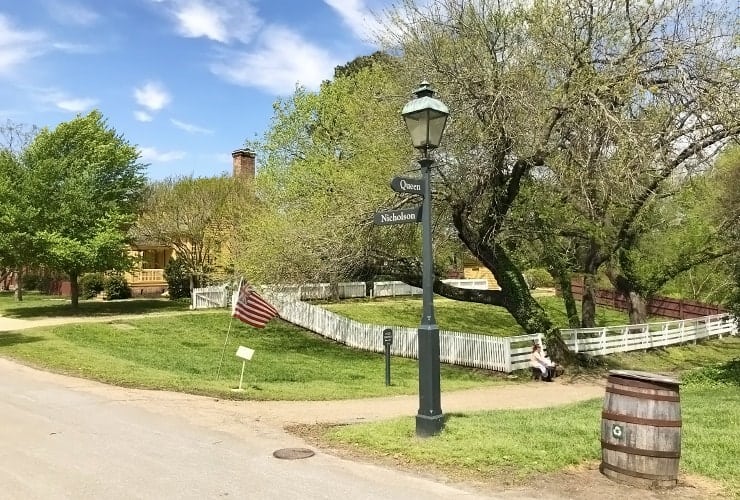
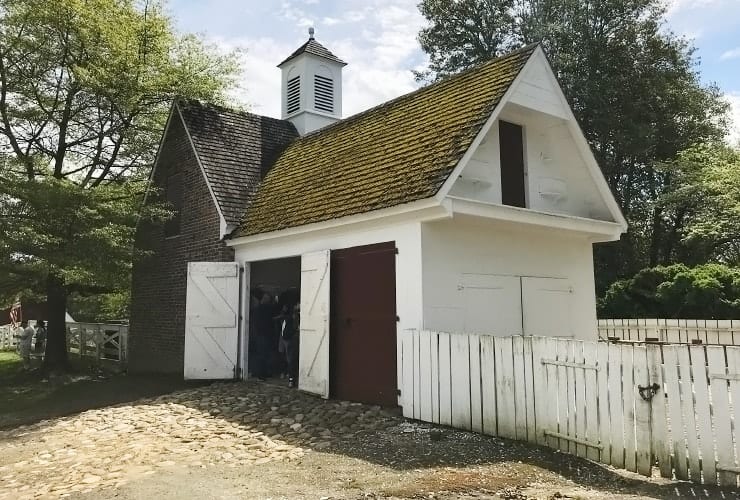
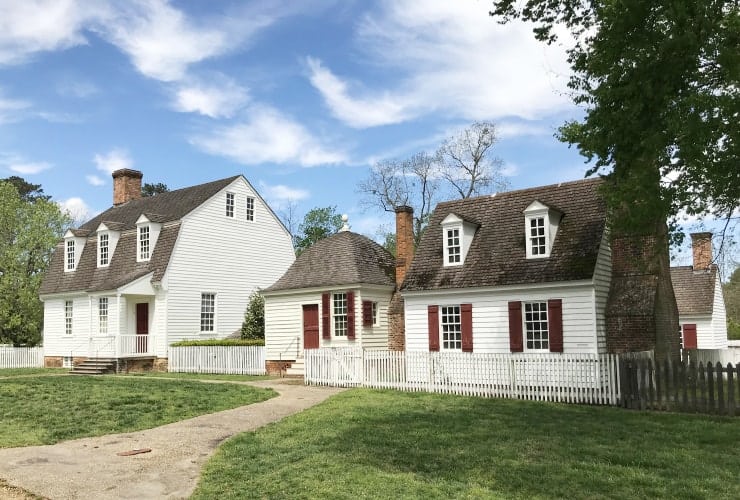
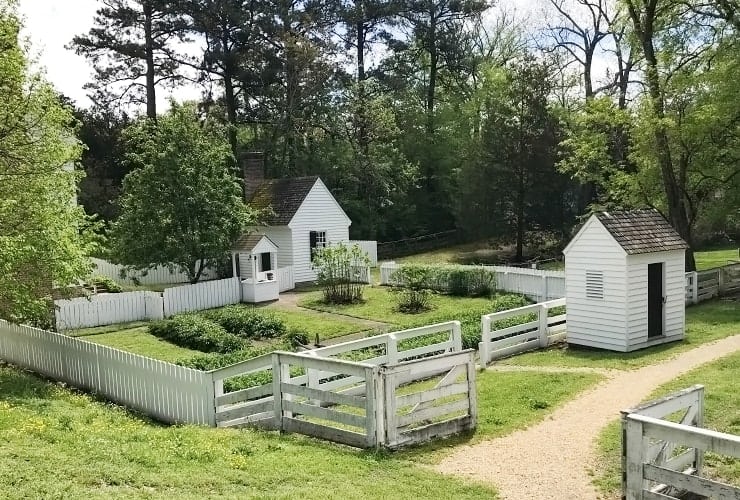
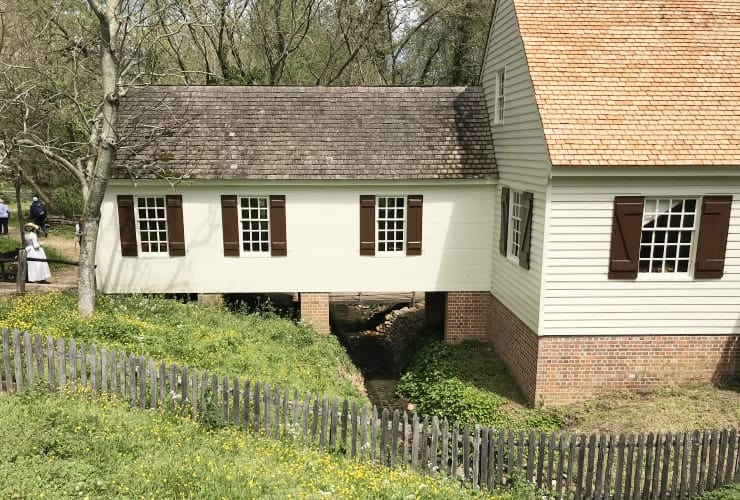
Nicholson Street runs parallel to the more well-known thoroughfare of Duke of Gloucester Street and has several attractions of note. At the far west end there is the St. George Tucker House followed by the Randolph House. Further up the street are the brickyard, the cabinetmaker and the axe range. Along the way are some beautiful homes and gardens.
Peyton Randolph House
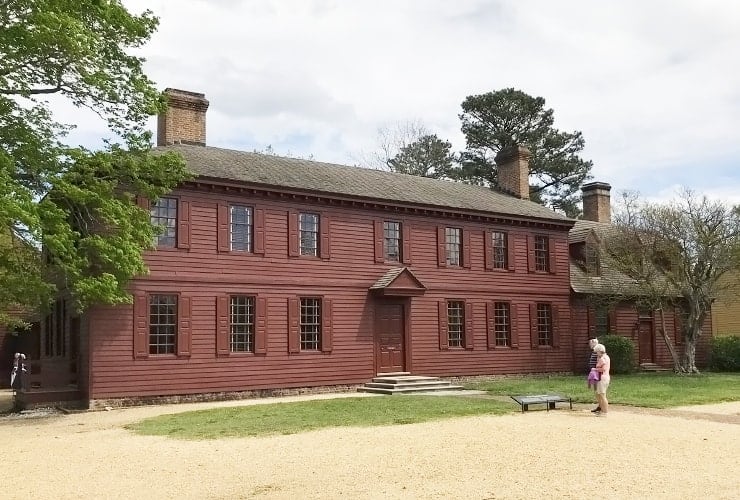
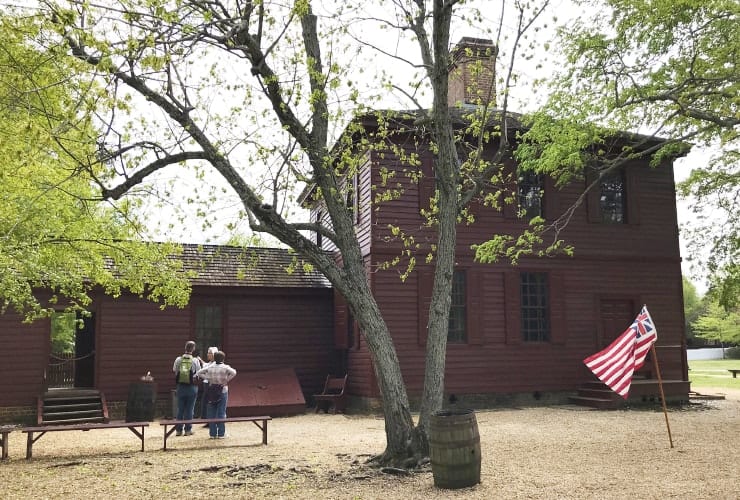
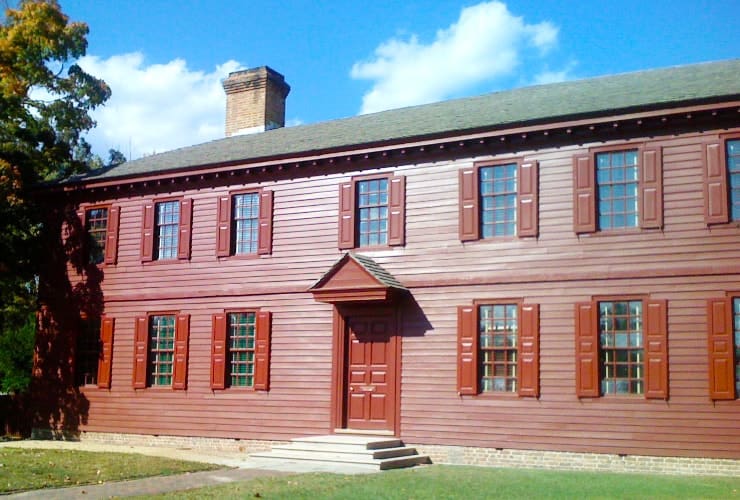
Seldom will you find a more notorious home than the Randolph House. The National Historic Landmark is known for its beauty including the exterior façade of exposed dark rust brick, impeccably carved walnut interior panels, corner fireplaces with wood marble mantel crowning and locks of polished brass. The home has housed such luminaries as Thomas Jefferson (the original owner’s cousin), Jean-Baptiste Donatien de Vimeur, comte de Rochambeau and Marquis de Lafayette. But it is most infamous as a genuine haunted house. Rumored to have been built on top of sacred Indian burial grounds, the home also saw much death both as a hospital for wounded soldiers but also various other odd occurrences including two young family members accidental deaths. To top it off, Peyton Randolph’s wife was known to be especially cruel to her slaves, one of which legend claims placed a curse on the home.
St. George Tucker House
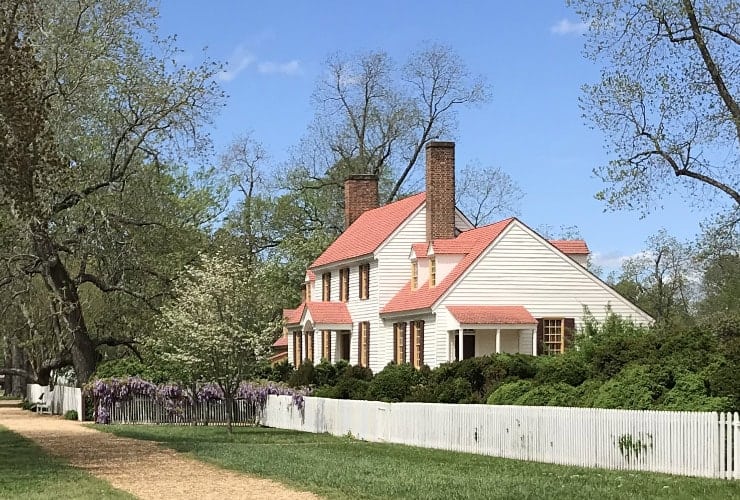
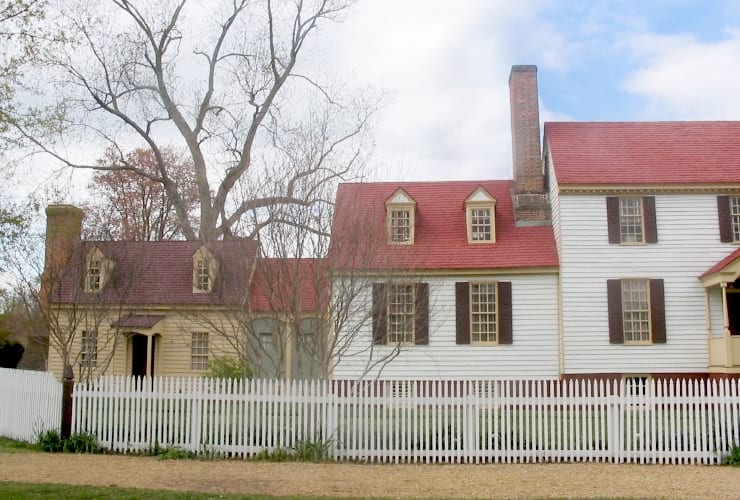
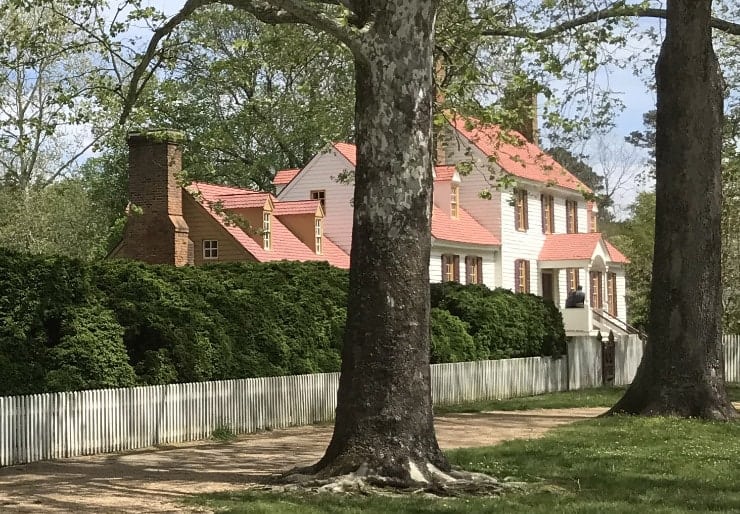
The St. George Tucker House is one of the oldest colonial homes in Colonial Williamsburg. Built in 1718, the Tucker family kept extensive documentation of all home additions and improvements making the home an historian’s dream. Tucker is perhaps most well known as one of the earliest colonists to speak out publicly against slavery. The home is also infamous for having introduced the tradition of decorating a Christmas tree when a visiting German guest brought one of his country’s traditions to the colonies. To this day the only Christmas tree in Colonial Williamsburg resides in the Tucker House.
Duke of Gloucester Street
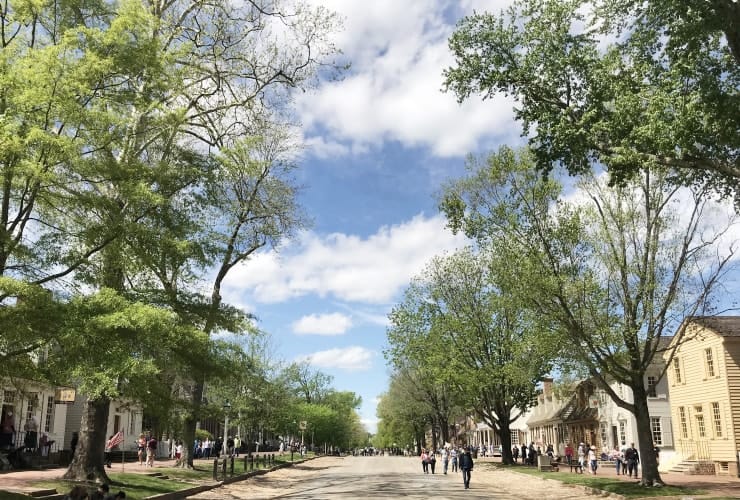
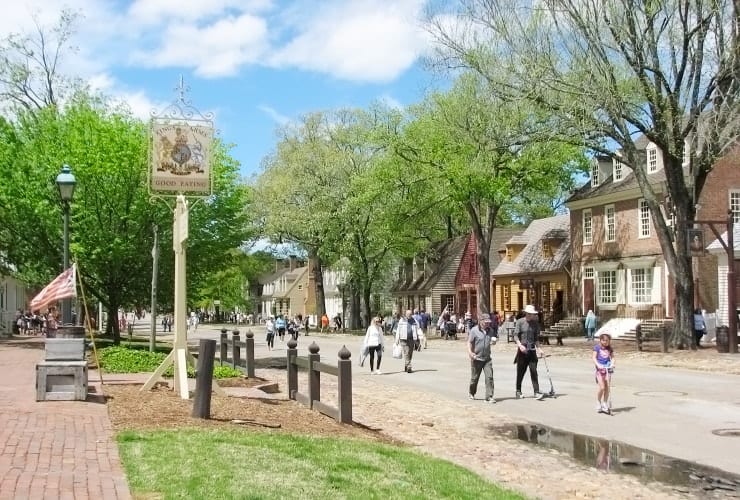
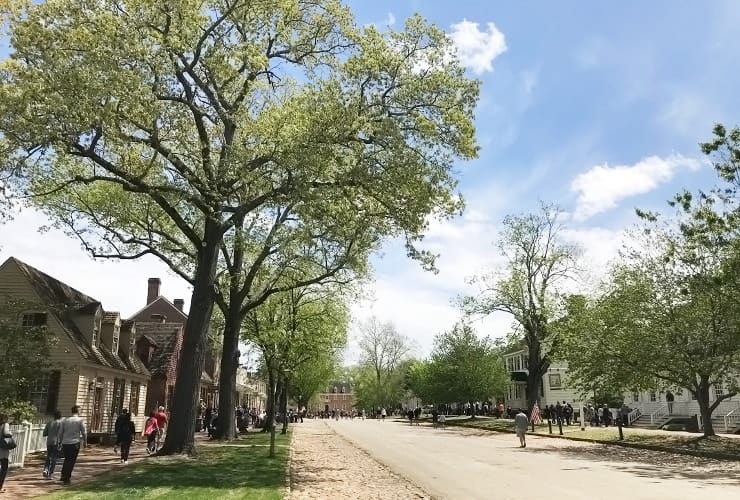
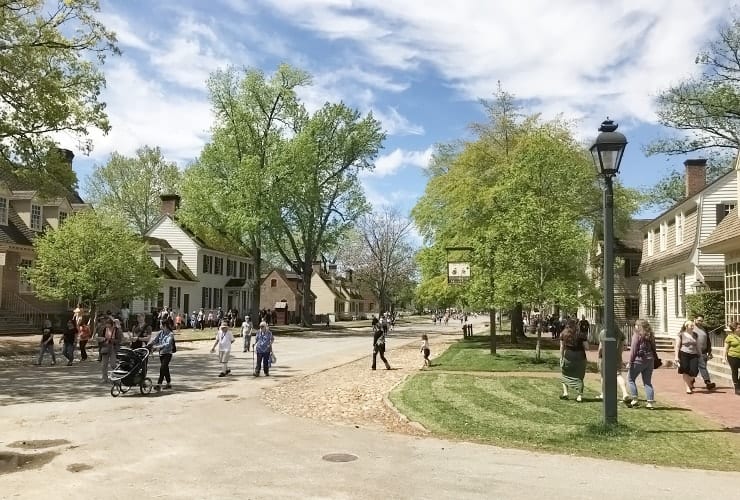
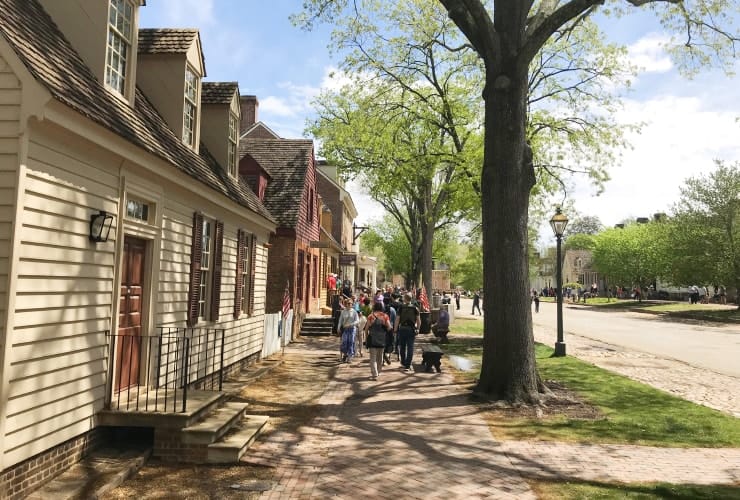
The Duke of Gloucester Street is the main thoroughfare of Colonial Williamsburg. 99′ (30.2 m) in width and a mile in length the only thing traveling faster than the thousands of daily tourists are the multiple horse carriages gliding over the cobblestone road. Running eight blocks in length, the road has been faithfully reconstructed to resemble a reenactment of colonial-style, 18th century life. The street has seen such luminaries as Thomas Jefferson, George Washington, Franklin Delano Roosevelt, Ronald Reagan and even England’s Queen Elizabeth during her 2007 visit to the states. The street has a wonderful variety of shops, historical places of business like millinery, silversmith, bakery and apothecary, restaurants and taverns.
Milliner & Mantua Maker
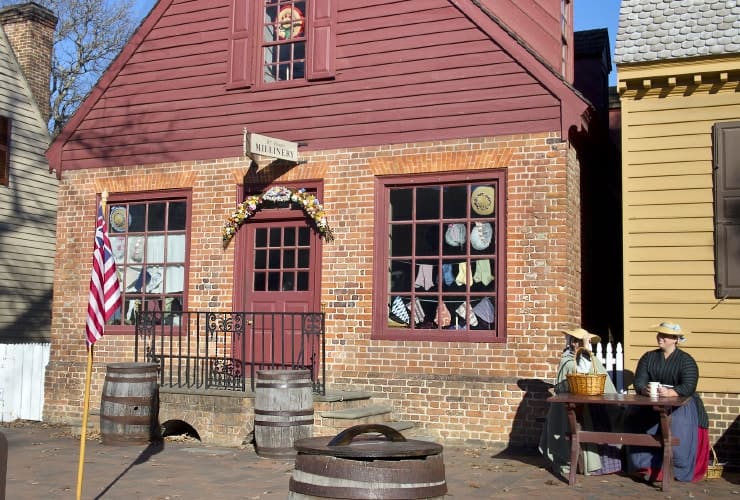
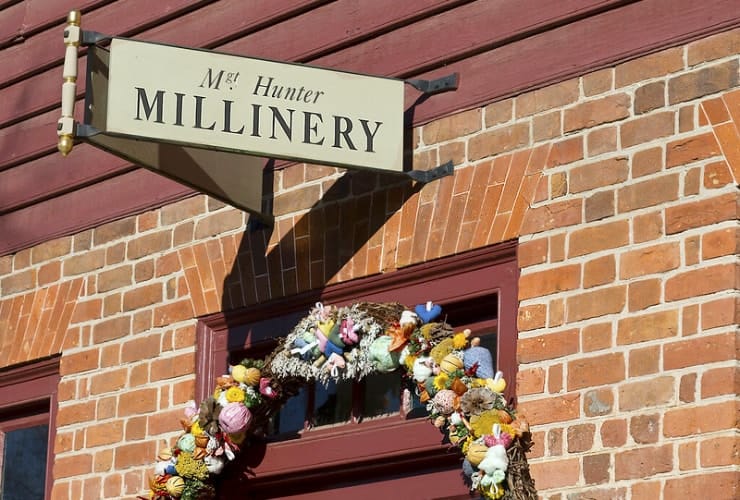
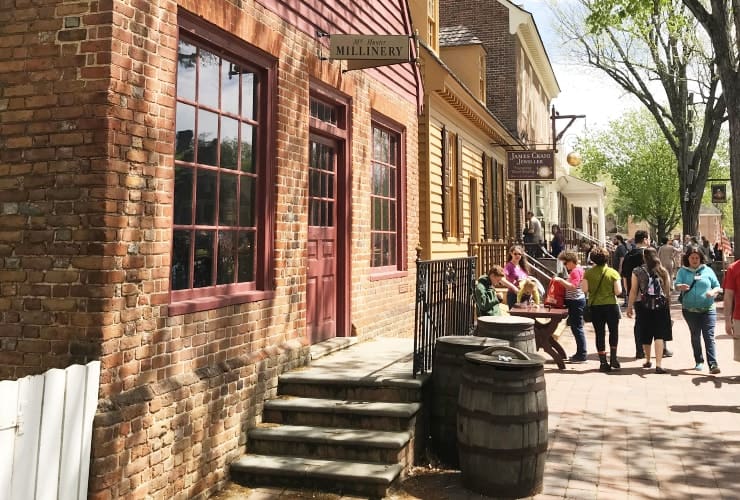
The Millinery on Duke of Gloucester Street is one of the more authentic experiences in Colonial Williamsburg. Not only can you purchase 18th-century clothing but the milliners and mantua-makers know their craft inside-and-out and fully enjoy sharing that knowledge with all inquisitive visitors. Prior to the American Revolution, millinery shops were the exclusive purview of women. It was their business to run and operate even though they weren’t yet allowed to vote or hold public office. If you have any interest in clothing this is a must visit destination.
Capitol Building
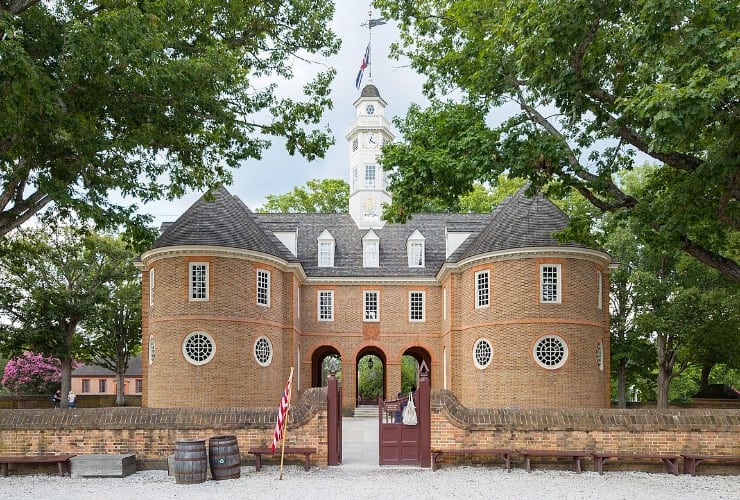
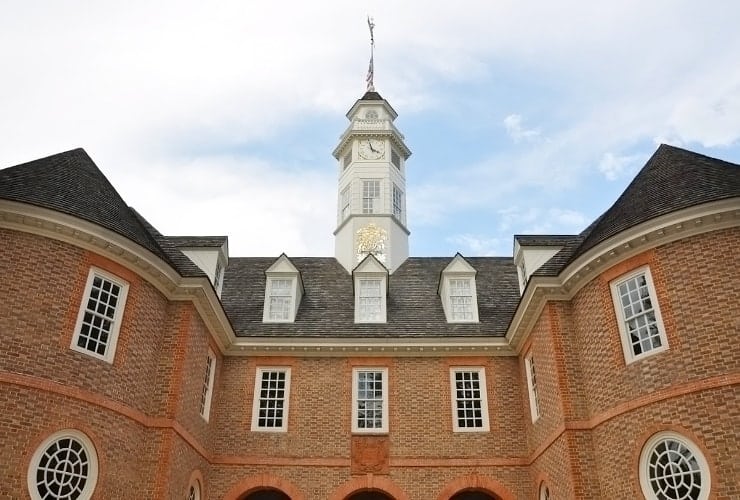
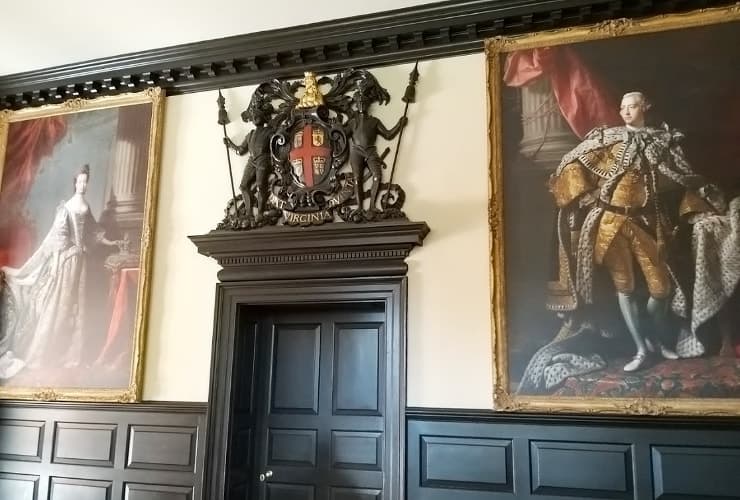
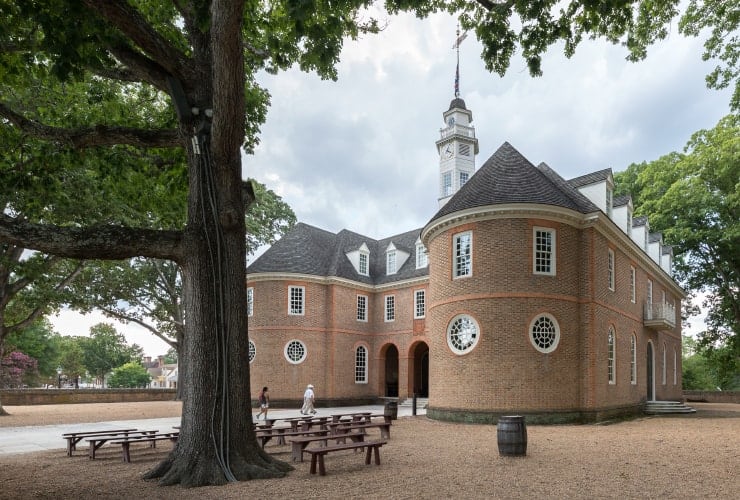
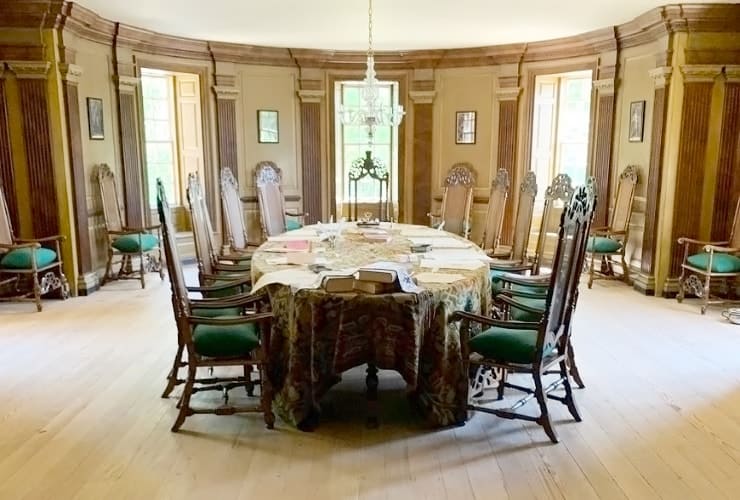
The Capitol building is on the east end of Duke of Gloucester Street and is the best guided tour in Colonial Williamsburg. Reputed to be the first building since the Roman Empire to take on the “o” in the spelling of Capitol, the history of the building becomes apparent during the tour. Though not the original structure, it is a faithful reconstruction of the original Capitol building which housed the House of Burgesses (American’s first representative legislative assembly) of the Colony of Virginia from 1705. The tour is around 45 minutes and you are guaranteed to walk away far more knowledgeable than when you entered.
Shields Tavern
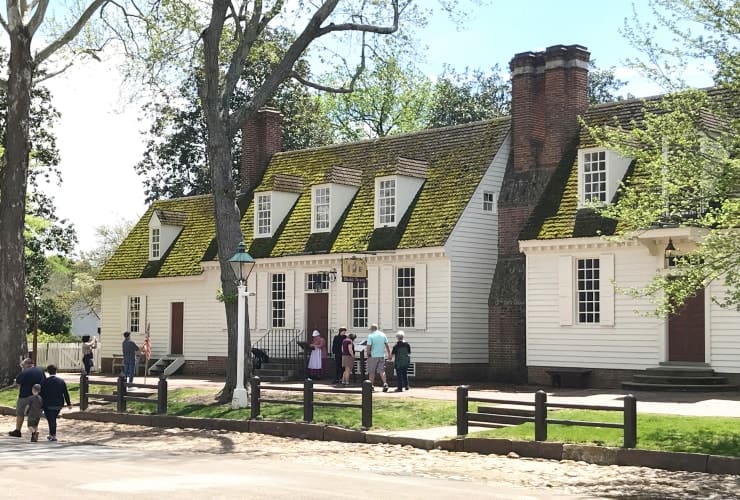
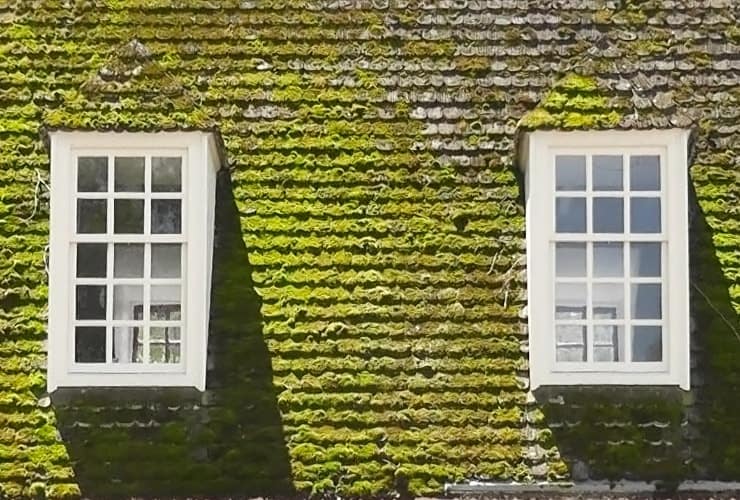
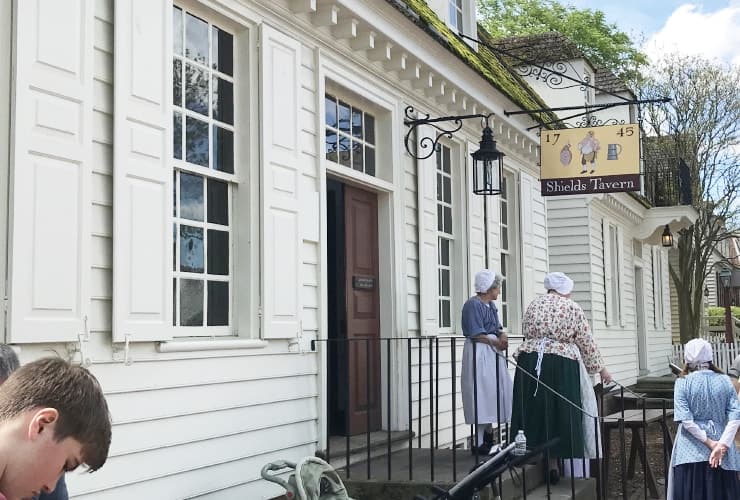
We had lunch at Shields Tavern primarily because I fell in love with the roof of the building. The food was excellent and there is definitely a revolutionary feel in both the ambiance as well as the menu offerings. Options included such 18th-century faire as Apple-Brined Chicken, Seafood Gumbo, Buffalo Meatloaf and a Catfish BLT. Moss grows on the roof due to its being on the north side of the building and it positively shines in the noon day sun. The irony is that the moss would have been removed in the 18th-century due to erosion of the wooden shingles but the reconstructed materials used today are far more resilient.
King’s Arms Tavern
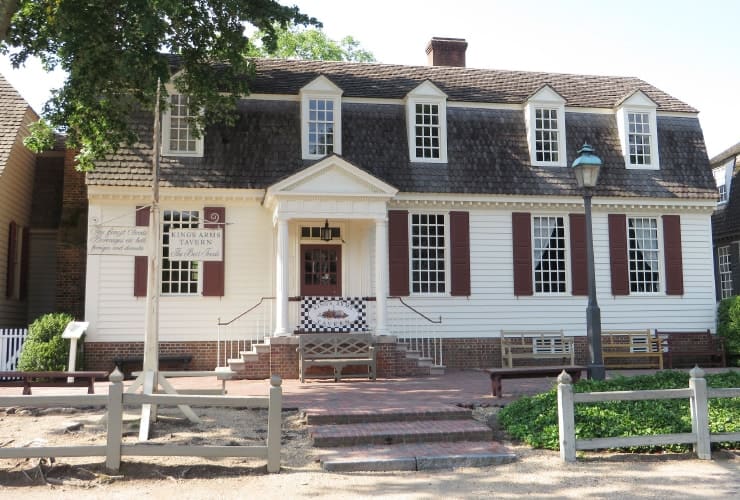
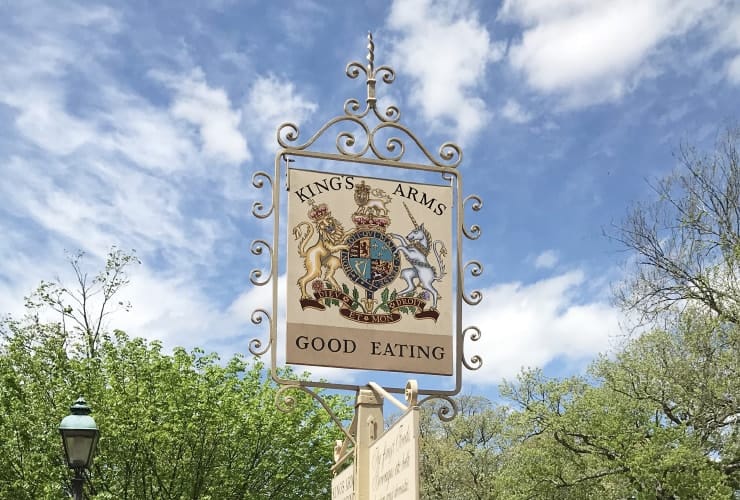
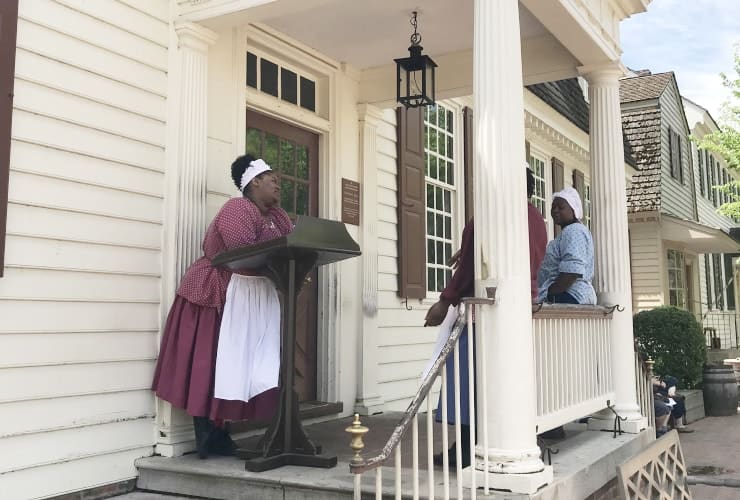
Next to the Shields Tavern is the King’s Arms Tavern which is easily identified by the coat of arms sign in front. All of the staff are in traditional 18th-century attire and dinners are served as in revolutionary times only lit by candlelight. Opened in 1772, the King’s Arms was considered the preferred dining out option for the genteel and more “upper crust” crowd. They feature a wide variety of choices including Peanut Soup, Hunter Games Pye, Butternut Squash Steak and Bourbon Pecan Pie but it also features a chophouse menu including pork chops, prime rib and roasted lamb.
Colonial Williamsburg Courthouse
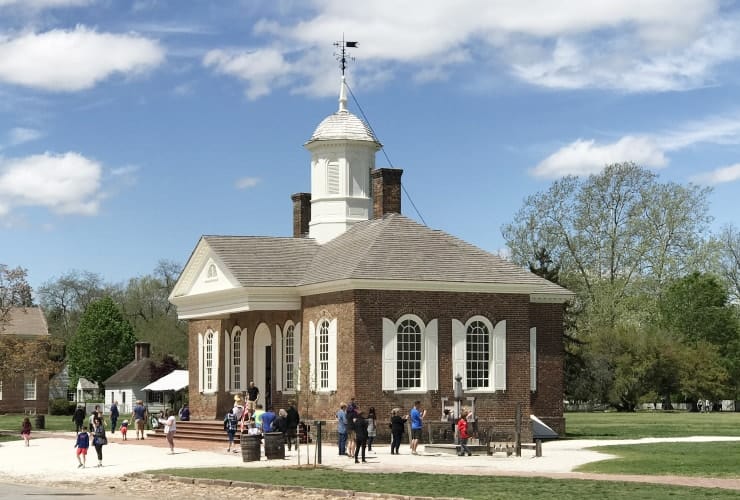
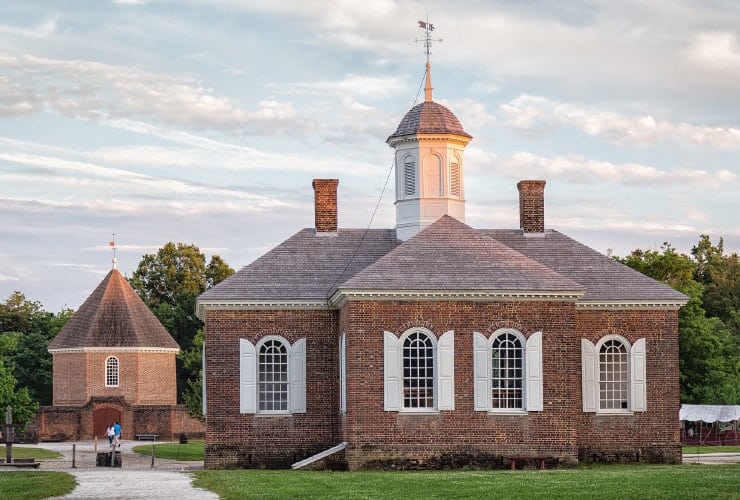
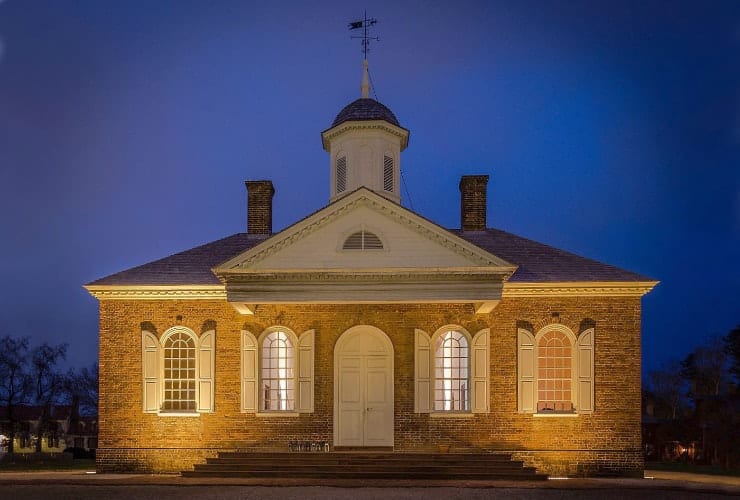
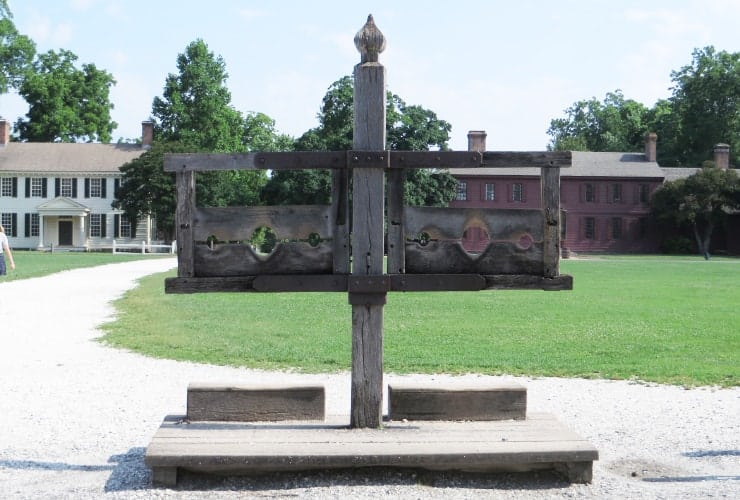
Nestled between Queen Street and the Palace Green is Colonial Williamsburg’s Market Square featuring the Colonial Williamsburg Courthouse. Built in 1771 with perfectly balanced Georgian style, the courthouse once served as the court system for both Williamsburg and James City County. One of the more significant moments associated with the courthouse was the July 25, 1776 reading of the Declaration of Independence by Benjamin Waller. If you are in Colonial Williamsburg early then you might catch the “Order in the Court” session that audience members are encouraged to take part in. Don’t forget to take a picture in the punitive pillory, stocks and whipping post just to the east of the courthouse.
Colonial Williamsburg Magazine
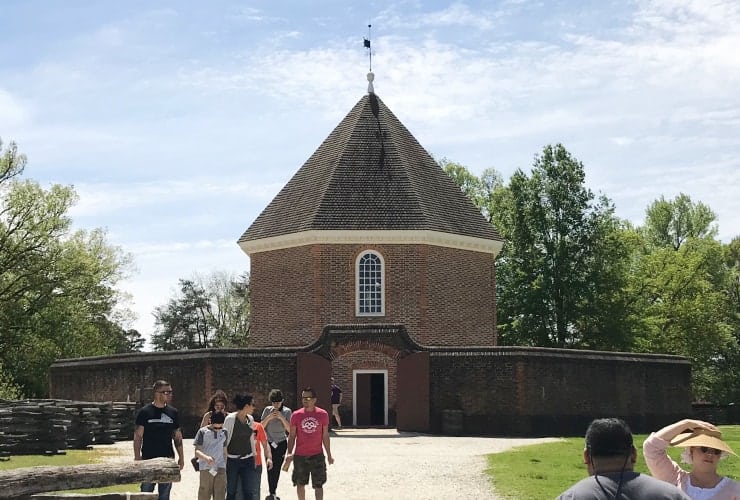
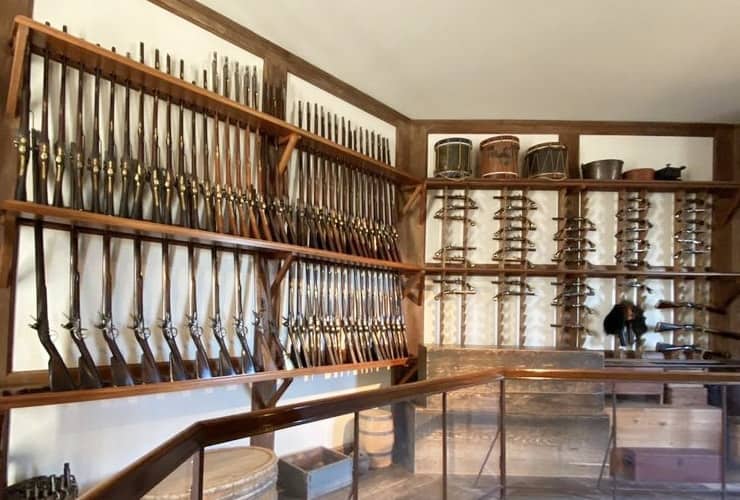
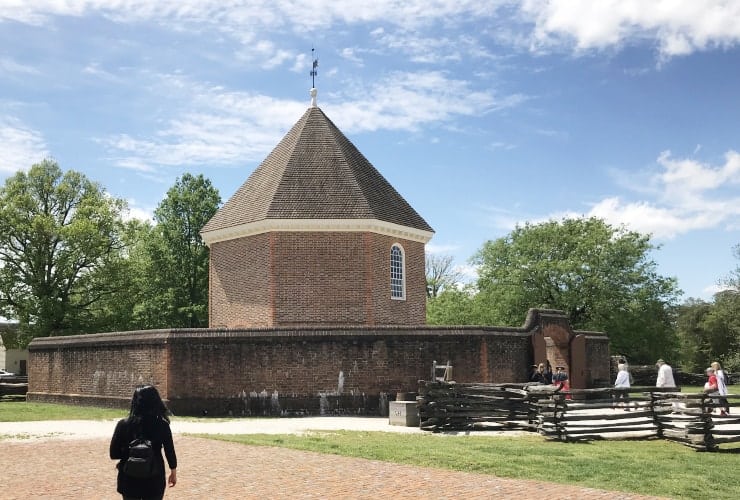
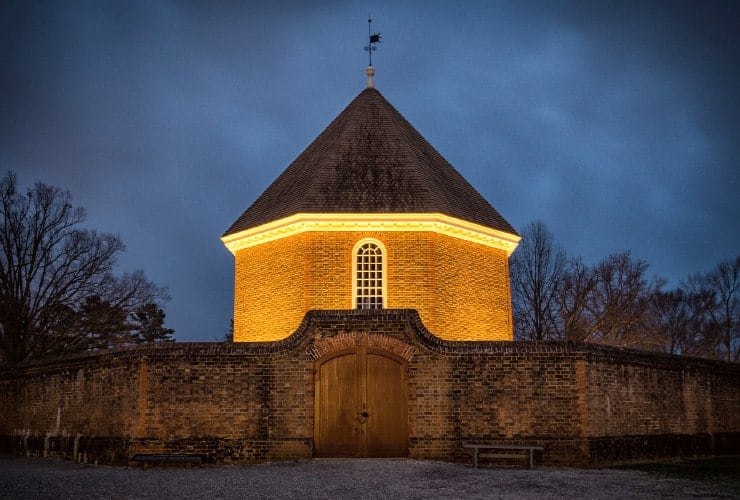
Directly across Duke of Gloucester Street from the Courthouse is the Colonial Williamsburg Magazine. Built in 1716 by Governor Spotswood, the octagonal shaped 2-story building served as a storage facility for military equipment sent to the colonies from across the pond. Known locally as the Powder Horn, the Magazine was home for the Gunpowder incident of 1775 which proved to be the impetuous that sparked Virginia’s decision to rebel against the British Empire. The British Governor Dunmore ordered the emptying of the arsenal and disabling of the muskets leaving the colonists unable to defend themselves.
Market Square Oak Tree
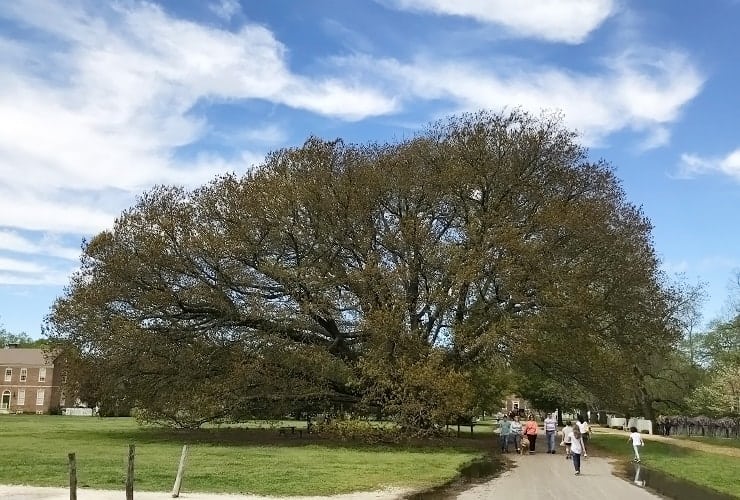
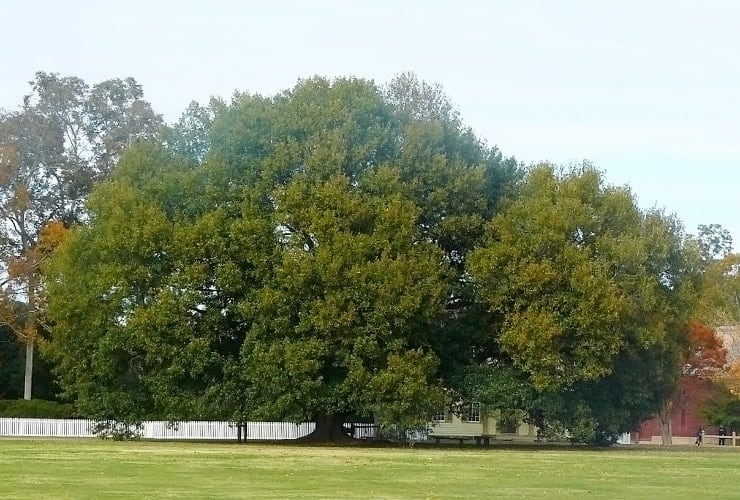
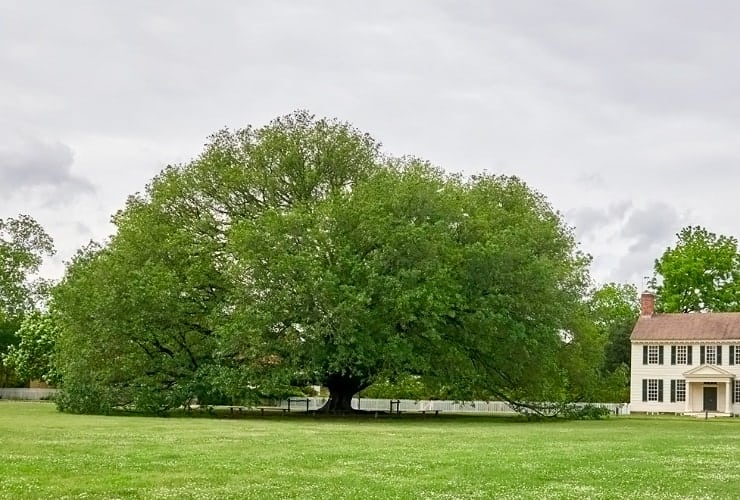
Across Market Square from the Courthouse is the mighty Compton Oak tree (Quercus X Comptoniae). Planted in the early 1930s, this awesome oak stands 70′ (21.3 m) tall, 97′ (29.6 m) wide and, at chest height, its trunk circumference is an imposing 14′ (4.3 m) in width. If you approach Market Square from the Visitor Center this picturesque tree is the first thing that catches your eye. The oak serves as a natural shade spot in the summer and a visual spectacle in the fall during foliage season.
Bruton Parish Church
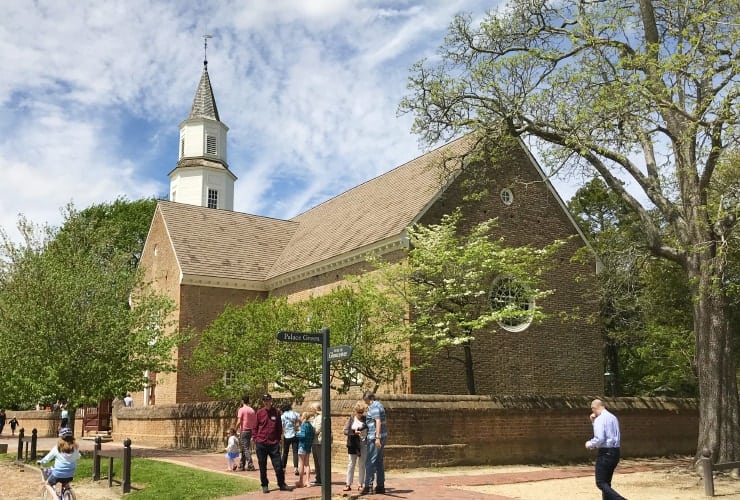
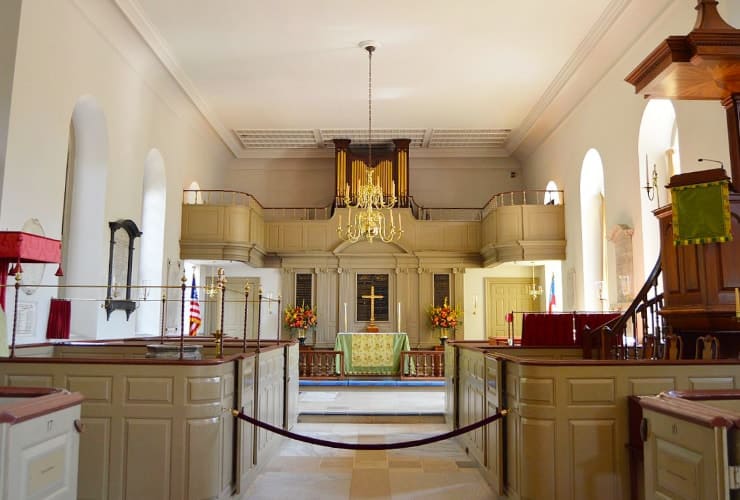
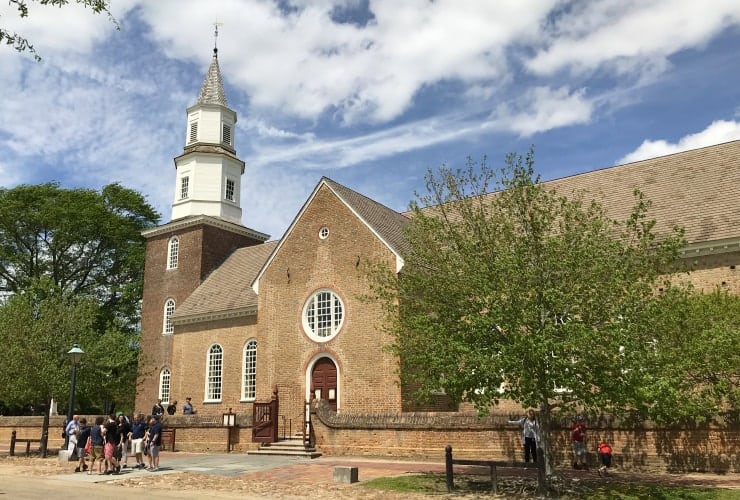
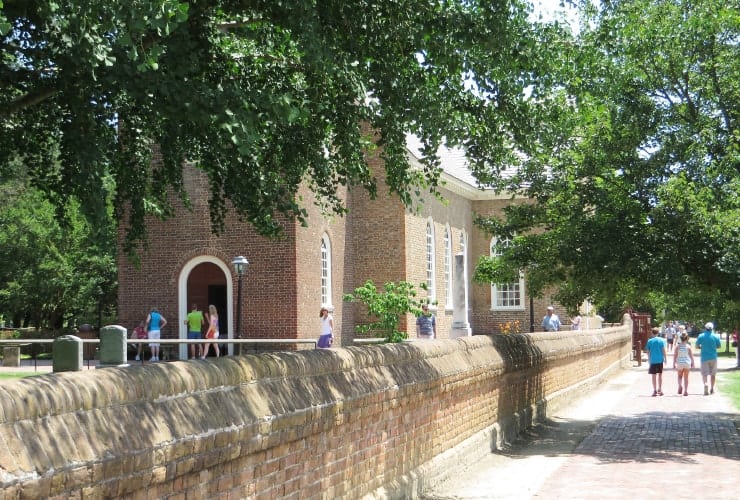
The Bruton Parish Church was first established in 1674 but the building that stands today wasn’t constructed until 1715 and was designated a National Historic Landmark in 1970. It was a small parish until the capital was relocated from swampy Jamestown to Williamsburg around the turn of the 18th-century. A full restoration took place in the early 20th-century under the guidance of the Reverend Dr. W.A.R. Goodwin who later was instrumental in the restoration of much of Colonial Williamsburg. Over the years the church saw several luminaries among its attendants including Patrick Henry, George Mason, George Washington and Thomas Jefferson.
Palace Green
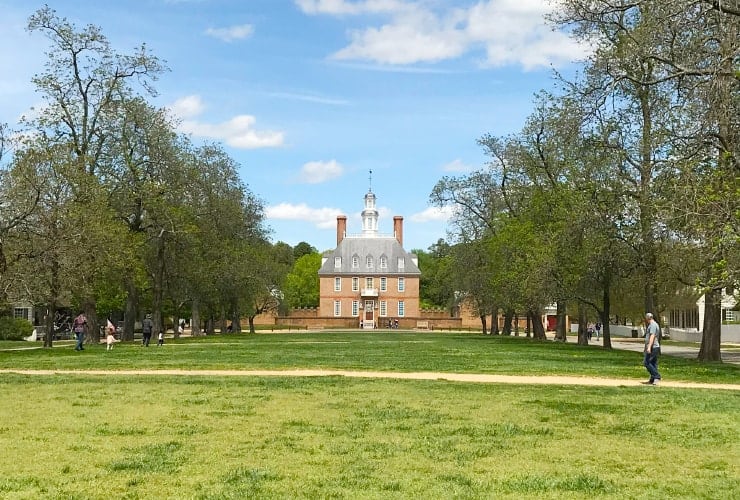
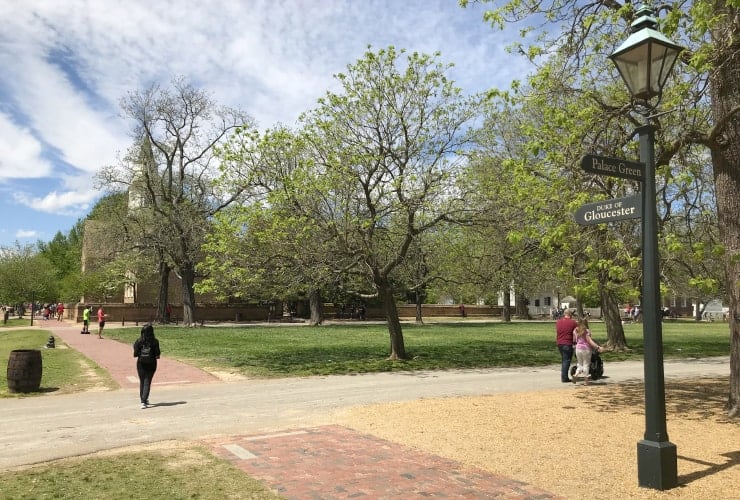
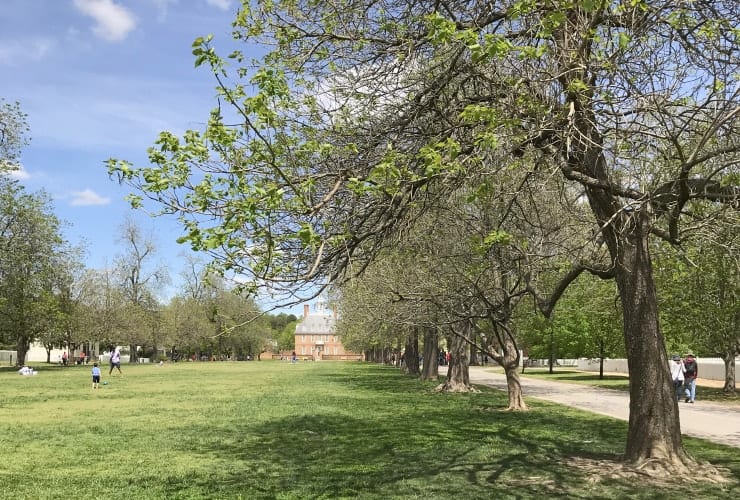
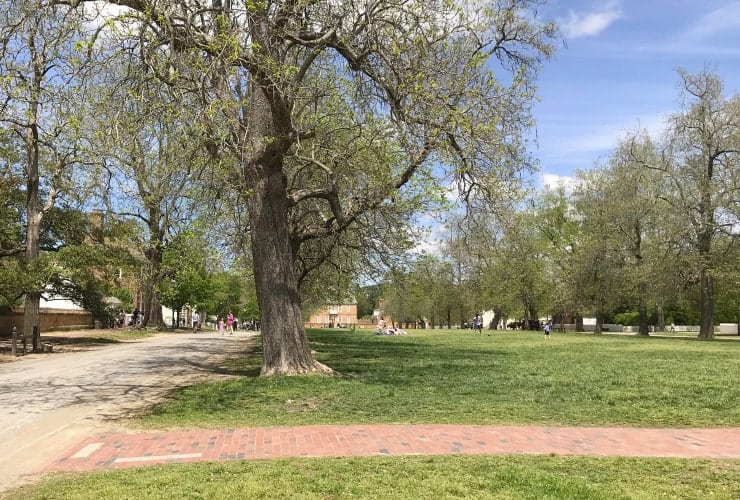
On the western end of Duke of Gloucester Street, wedged between the James Geddy House and the Bruton Church is the Palace Green. The positioning and 900′ (274.3 m) expansive length were deliberately designed by Governor Francis Nicholson to draw ones focus to the seat of executive authority in Virginia, the Governor’s Palace. The green has always served as a resting place for relaxation, a quiet lunch or a pleasant stroll. Traditionally there is a summer “Lights of Freedom on the Palace Green” with a fireworks display and live music.
Governor’s Palace
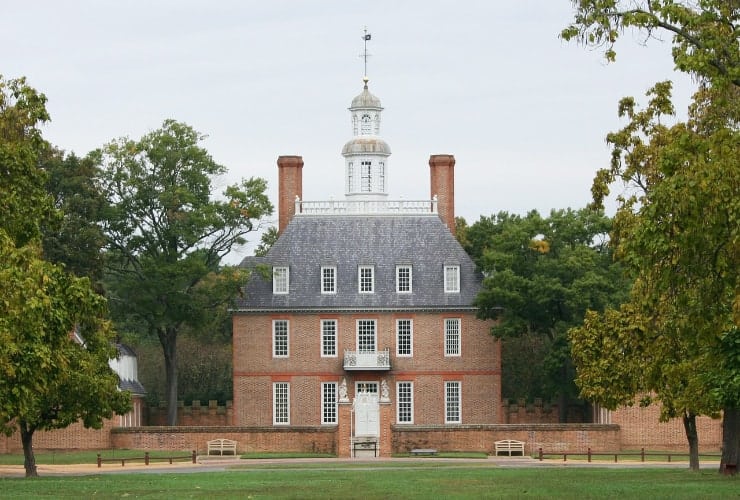
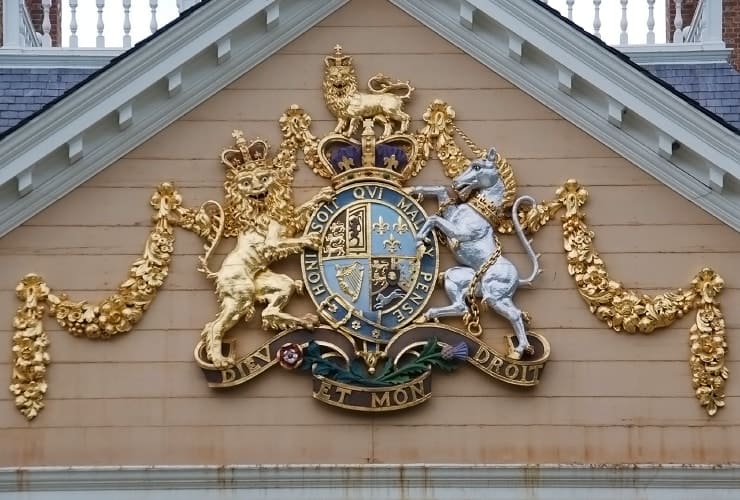
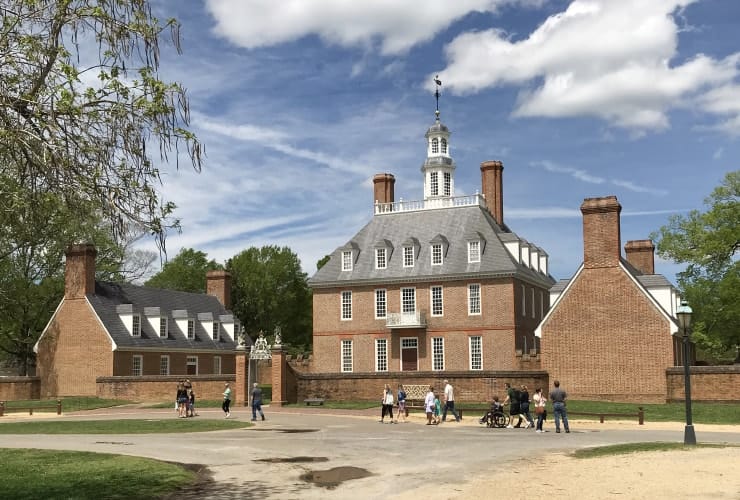
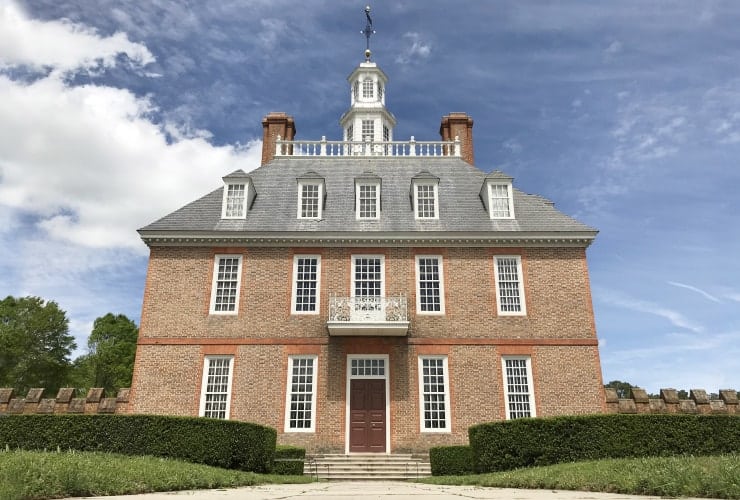
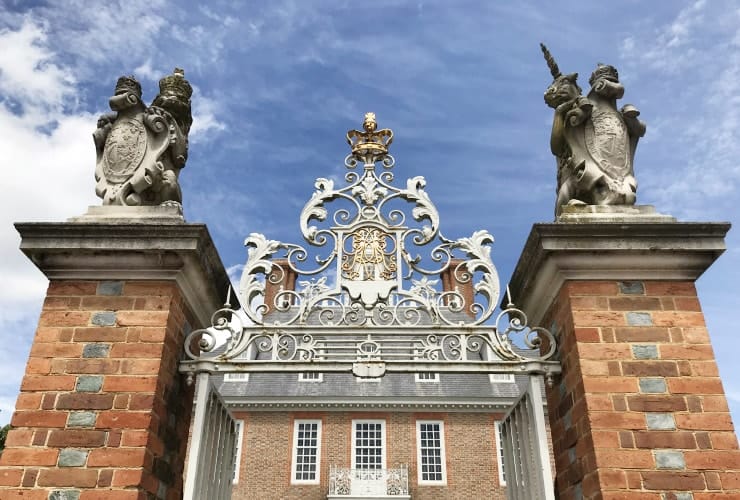
The original Governor’s Palace was completed in 1722 and was very modest by European standards but considered quite ornate for a colony. The official residence of the royal governor was built in the Colonial/Georgian style with 3 floors measuring around 3,380 ft2 (314 m2) each, iron balconies, a row of dormers in the roof, a balustrated deck and a cupola. The palace hosted events from birthday parties for kings and queens to a treaty signing with a Cherokee chief. It was destroyed in a fire but faithfully reconstructed during the 1930’s to its present state. An interesting side note . . . the last of the seven Governor’s to live at the palace was future President Thomas Jefferson.
Horse & Carriages
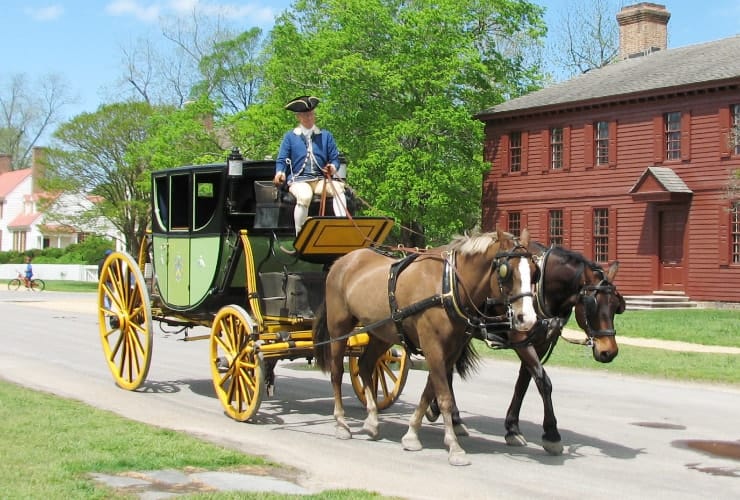
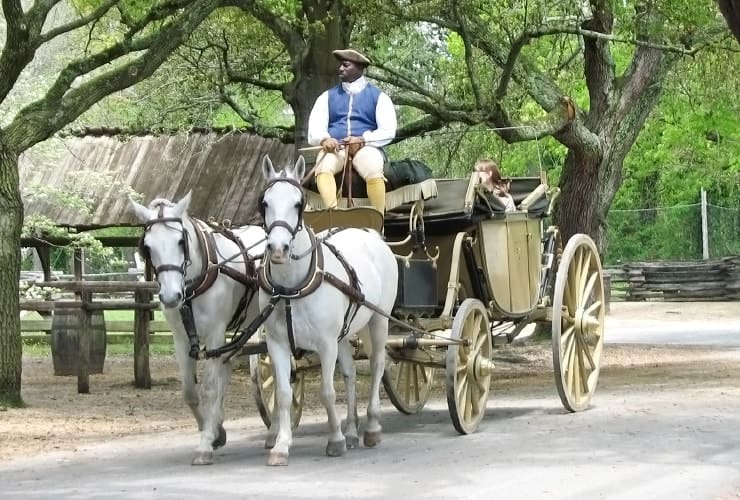
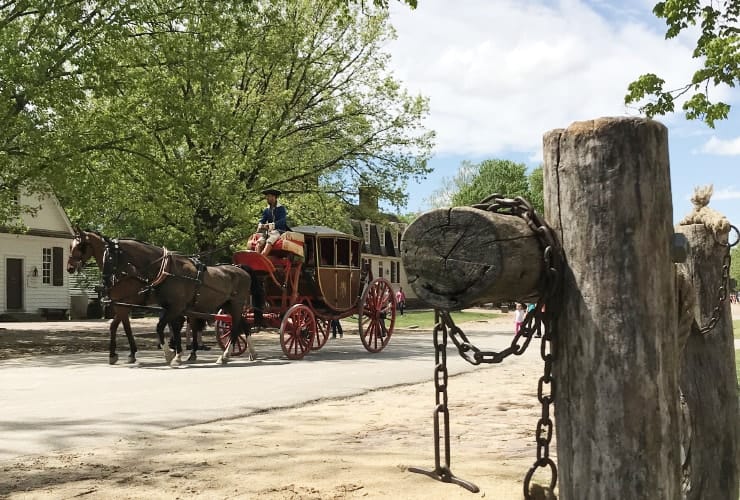
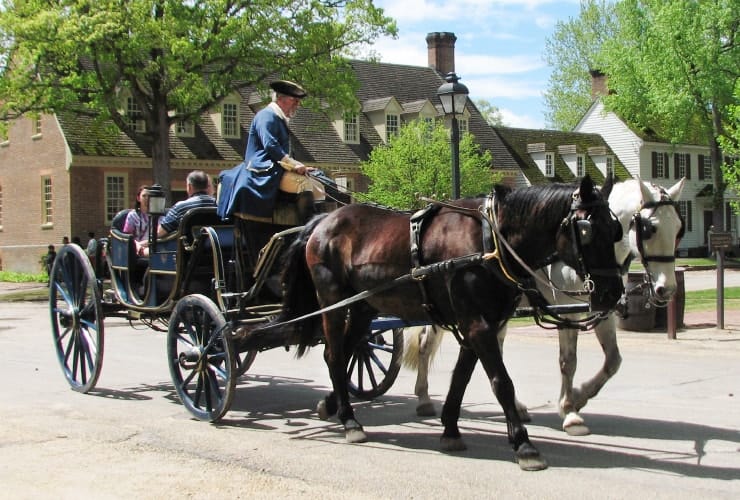
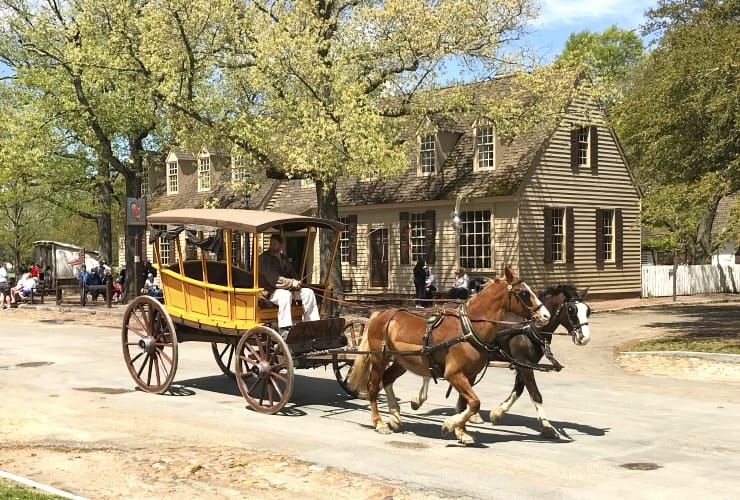
One of the pleasant additions that certainly lends to the authenticity of Colonial Williamsburg is the constant presence of tourists being drawn by traditional horse and carriages. With drivers dressed to the hilt it is a reminder of the simpler pleasures from America’s past. Just be sure to always keep an eye out where you are walking . . .
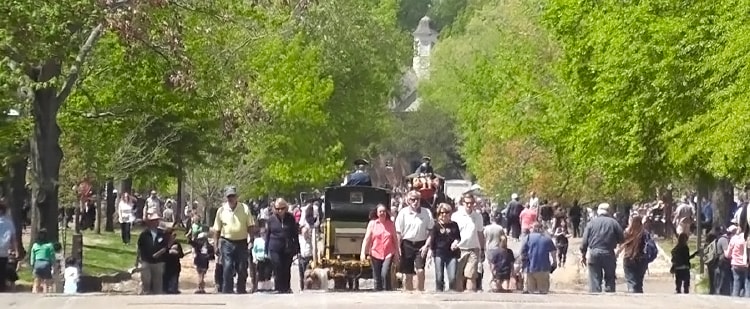
Colonial Williamsburg is one of many historic sites in America where one can be transported back a few centuries to a different time. I grew up in the Northeast where places like Boston, Mount Vernon and Sturbridge Village are more common. If you haven’t spent much time on the east coast of the U.S. be sure to visit when next here.
What is your favorite historic historically nostalgic place to visit? We’d love to hear from you.

